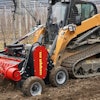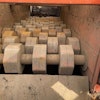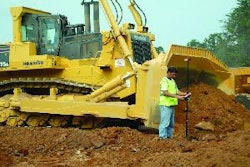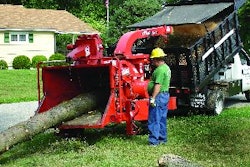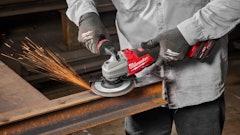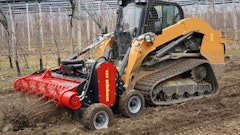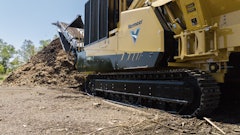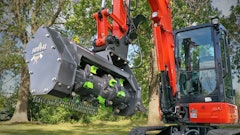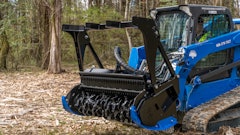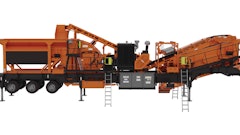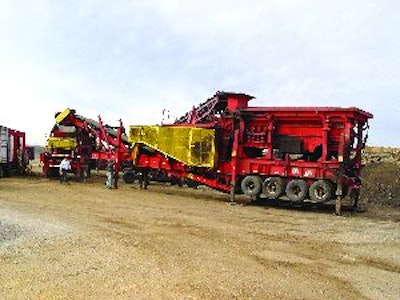
Thompson Recycle, Tecumseh, MI has moved their asphalt rubble crushing operation from site to site more than 750 times to crush 18 million tons from 1995 through 2007, which includes 13 crushing seasons of eight to nine months each. Thompson operates exclusively in Michigan, generally covering an area from Grand Rapids east to Port Huron on Lake Erie and south to the Indiana and Ohio borders.
But Thompson Recycle does not operate a compact, so-called ?mini-crusher? designed for fast in-and-out handling of small crushing jobs.
Rather, Thompson uses a large, road-portable, electric powered Grasan KR1515 primary horizontal impactor plant capable of up to 600 tons per hour as the heart of their recycling system, which also includes a screening plant, radial stacker and return conveyor that are all road portable.
A front-end loader and 30-foot stackable conveyor are transported on trailers. A generator and control center are housed inside a 40-foot shipping container on a 53-foot trailer.
?We move basically seven major pieces of equipment with seven tractors, plus smaller items such as a water tank and light tower that are towed with pickup trucks,? says John Thompson, owner and president of the contract crushing company. ?Tractors are provided by a leasing company as needed at each site. We own the trailers.
?We move six to 10 times a month to handle jobs ranging from a minimum of 10,000 tons up to 70,000 tons of asphalt rubble per site. And we?ll crush anywhere from 1.2 million to 1.5 million tons in a typical year. It?s rare that we crush anything other than asphalt.
?Most contract crushers can?t move that often for jobs that small with a big plant and make out, because moving is expensive,? Thompson says. ?The key is efficiency. You need an efficient, hard-working crew and efficient, durable equipment. We can shut down early in the morning at one site, drive 100 to 200 miles to another site and be operating again by mid to late afternoon.
?But you also need durable, efficient equipment you can set up quickly without special equipment, other than a front-end loader,? he continues. ?The heart of our system, of course, is the crusher. The six independent hydraulic legs on the Grasan impact crusher level the plant quickly and easily, ready to run in 15 minutes usually; and the legs provide complete operational support.
?Grasan also designed the plant for us with hydraulic clamping and fastening mechanisms instead of bolts, which saves a ton of time, plus there are no nuts and bolts to wear or lose.?
Thompson runs the impactor with two blow bars and two dummy bars for balance and to protect the rotor. He turns the blow bars every 20,000 to 25,000 tons, getting about 80,000 to 100,000 tons from a set of bars. He gets about 700,000 tons per turn on the mono-block apron, and about 200,000 tons on the apron rear impact plates before the edge is worn off.
The crew checks over the entire system at the start of each shift and generally performs maintenance while tearing down for a move. Any major repairs are made during the winter shutdown.
Thompson Recycle operates 24 hours a day in two 12-hour shifts, Monday through Saturday. A crew of seven men, including Thompson, alternate their hours so each shift has a crew of two to three men. Each man normally works a five-day week. The plant is moved so often because Thompson has a steady list of customers.


